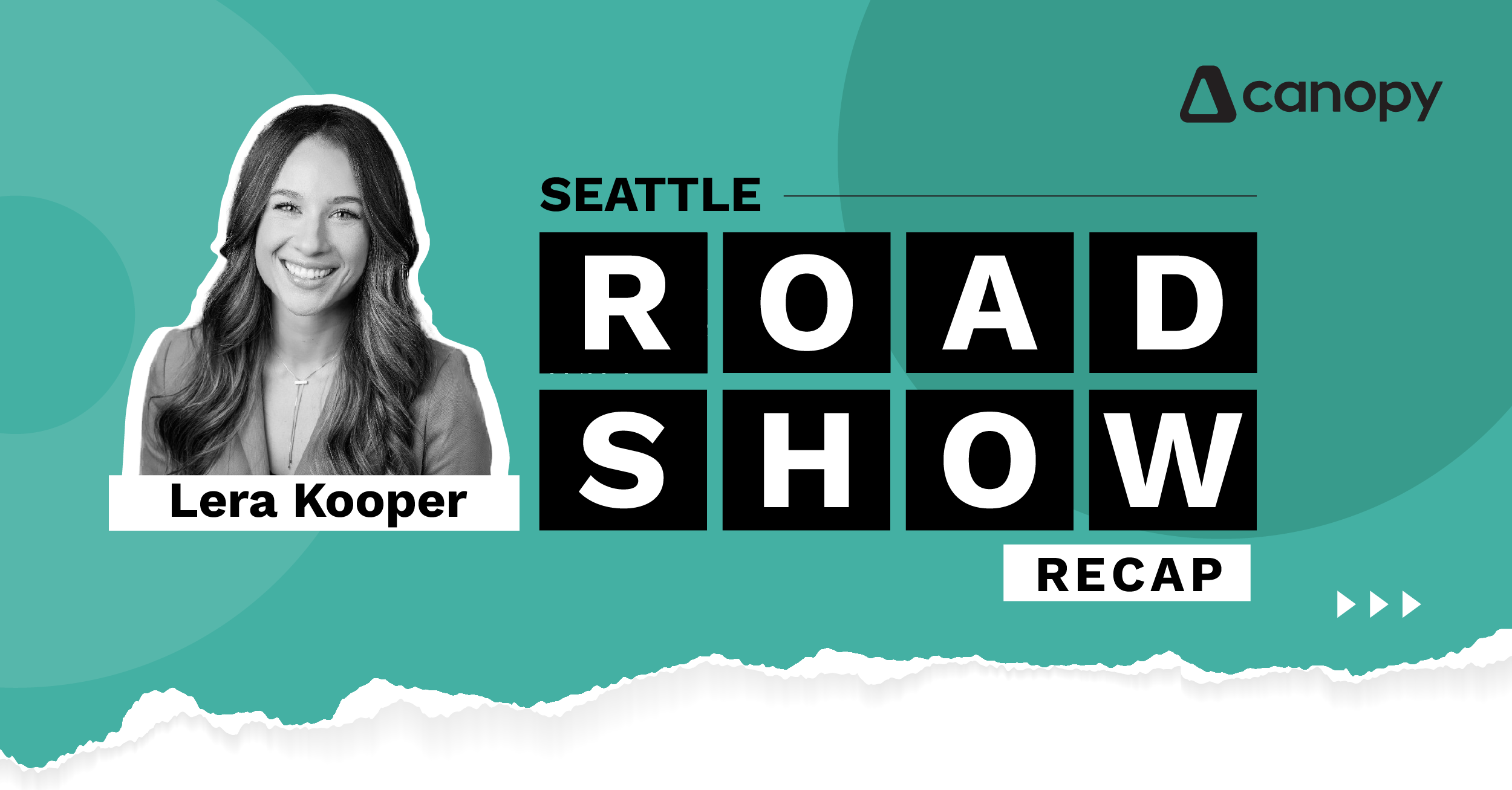In June, I had the great pleasure of presenting to like-minded firm owners at the Canopy Road Show in Seattle. Sharing what we’re doing to chart a new course for our industry was exciting, and I’d like to recap the main topics I covered at the event.
If you take just one thing away from this piece, I want it to be this: You don’t have to run your firm “the way it’s always been done.” It’s YOUR business. Not your clients’ and not your team’s. It’s yours – and you have the power to change it.
Not long ago, we too found ourselves battling these common CPA nightmares:
Scope creep out of control
Tax preparers bogged down cleaning up clients’ year-end books
Reactive, transactional, commoditized client relationships
Burned out staff and frustrated clients
Competing on price
Struggling to attract talent
But in 2020, we decided to invest our owner time (and therefore “lost” billable time) into building something better. Better for our clients. Better for our team. Better for ownership. And better for the future of accounting.
Here’s how we flipped the model.
Engagement Letters are Your Friend in Scope Creep.
All great CPAs are driven by a desire to help. It’s just who we are. That’s why it can feel nearly impossible to say no when a client reaches out with a request that falls outside of scope.
But over time, those quick favors and unexpected asks will pile up and bog you down. If you want to deliver reliable, high-quality service across your client base, clearly defining your scope and holding that line is essential.
We decided to stop treating engagement letters as formalities. Instead, we took the time to nail down exactly what each client needed and accurately outline the services we’d deliver to achieve those ends.
Setting clear expectations up front isn’t just good for the firm. It also allowed us to plan better and allocate resources mindfully to deliver on our promise.
Stronger engagement letters also simplify task management for our team – now it’s easy for everyone to understand their precise responsibilities, along with the workflows they need to follow to complete them.
Educating legacy clients on a stricter scope creep policy can be challenging. Try to focus on how the change benefits them:
Ensures they get the exact services they paid for, on time
Setting pricing for the full year’s services is better for budgeting and cash flow
Be sure to invest time and energy in internal training. You want your team to feel comfortable holding the line against scope creep, but also need them to do it gently, mindfully, and with an eye on maintaining a positive customer experience.
Divide and Conquer with Departmentalization
Once upon a time, our firm was one jumbled team of hard-working generalists. We got things done, but only because we had a shared mission, were driven to succeed, and had plenty of hustle.
What we didn’t have were defined roles, clearly delineated departments, and a clear list of responsibilities and expectations for each individual member of our team.
It was chaos. So, we wiped the slate clean and restructured our team to mirror the way big firms operate. After all, if we wanted to scale, we needed to be ready for it.
First, we pulled out the operations team
Next, we separated tax from accounting
Finally, we built a Client Accounting Services (CAS) team
We then identified senior members of the CAS team who could deliver deeper advisory services, including FP&A
The difference post-departmentalization is extraordinary. For example, now CAS gets client books tax-ready before the tax team even sees them. Imagine that.
Our leadership team learned to departmentalize, too. One by one, we delegated tasks to remove workflow and legacy knowledge bottlenecks and make space for strategic planning.
As we have grown and acquired other firms, this framework has simplified the process of merging teams, getting people in the right seat, and hiring/training new staff to meet specific needs.
When each department, role, and leader has a well-defined scope, there’s no need to depend on unicorns who can do everything. Instead, you can bring in specialists who excel in their specific area.
A Tech Stack Built to Scale
Once we had solid systems in place to make and keep promises to our clients, the next challenge was improving efficiency and preventing things from falling through the cracks.
That meant tackling tool bloat and rethinking our tech stack from the ground up. We stopped clinging to outdated platforms just because they were familiar and streamlined our systems by focusing on using fewer tools that could do more.
During this process, there were five dealbreakers:
Open APIs – Canopy was the cornerstone of our new practice management system, but no software can do it all, so we needed our chosen tools to be able to talk.
Fully cloud-based – Browser-based tools remove the need to constantly update software or log into virtual offices.
Scalable – Smooth and efficient onboarding for both team members and clients.
A tech roadmap – Confidence that the tools we select will grow with us.
A true partner in spirit – Vendors who actively seek (and act on) feedback, develop relationships, and celebrate wins with you.
These guidelines showed us where to invest, who to invest with, and how to build a technology infrastructure capable of keeping up with aggressive growth.
Firm of the Future
We used to be just like any other accounting firm. Stumbling along, on the verge of burnout due to the old, broken CPA model. Today, we’re proud to be a leading example of how a modern firm should operate.




























